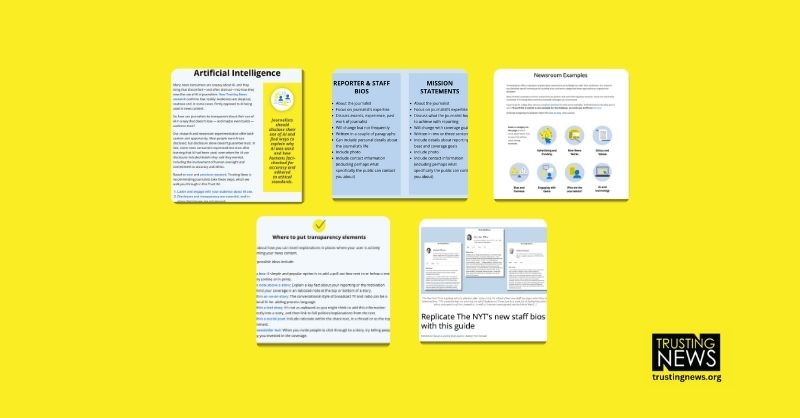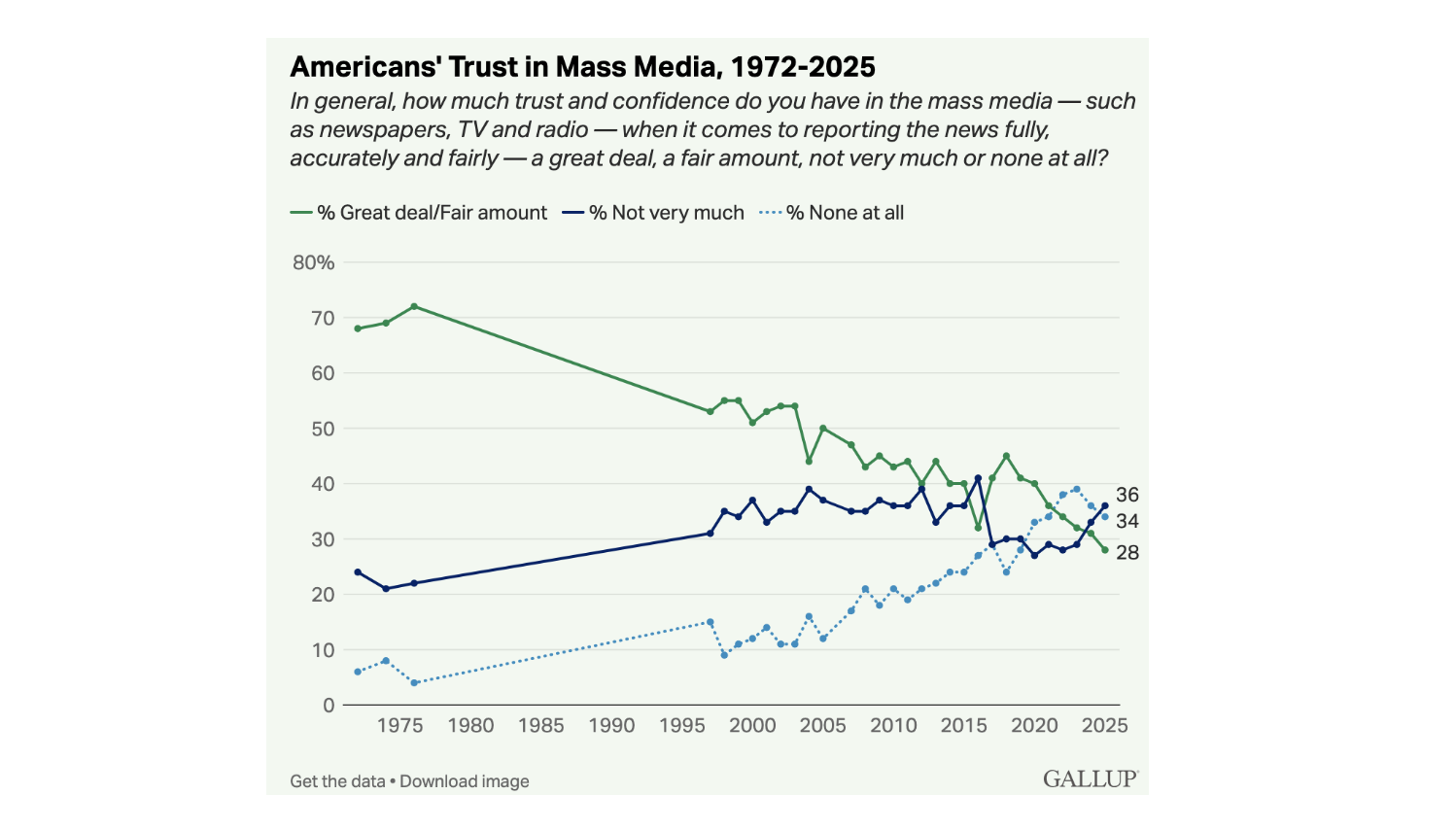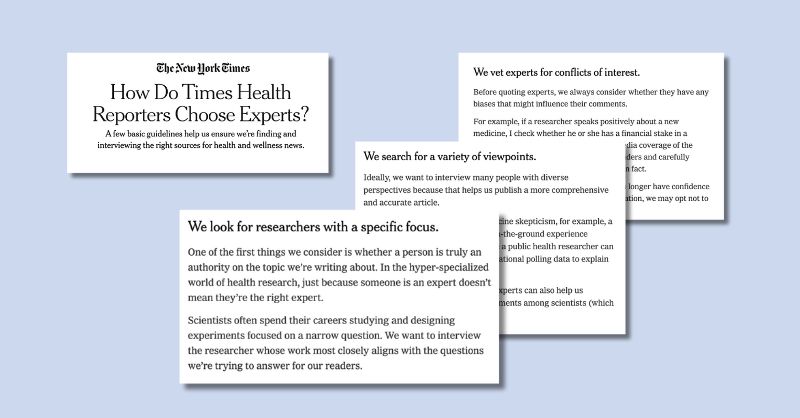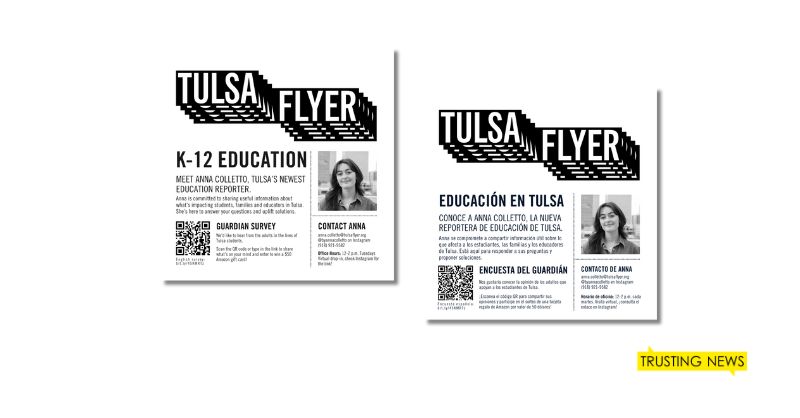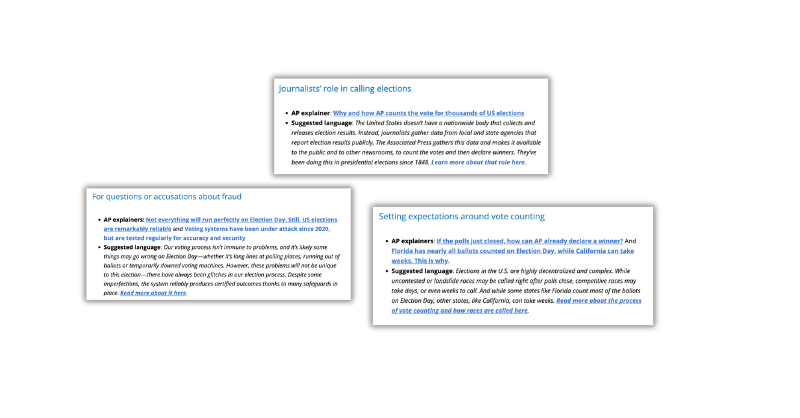
We know to expect the unexpected during election season. Election results are no exception to this. While the 2020 presidential election perhaps helped familiarize us with the idea that vote tallying can take a while, it’s more than likely there will be questions, misassumptions, and mis- and disinformation about how votes are counted and who […]
Use these pre-written explainers to set Election Day expectations
We know to expect the unexpected during election season. Election results are no exception to this.
While the 2020 presidential election perhaps helped familiarize us with the idea that vote tallying can take a while, it’s more than likely there will be questions, misassumptions, and mis- and disinformation about how votes are counted and who won the election. And we know conspiracy theories and false information thrive when there is confusion.
Journalists can be a trusted voice of reason during chaotic times. In fact, that’s when we’re needed most. People’s feeds and inboxes and brains will be full of conflicting, confusing information. We need to acknowledge that that’s the environment we’re a part of and work hard to cut through the noise with on-ramps to facts and vital context.
One way we can do that is by explaining how elections are called and how votes are counted, as well as helping normalize the idea that vote counting takes time and that it’s very possible we won’t have all the results on election night.
3 explainers to share, with copy/paste language
It’s reasonable for people to wonder why journalists are declaring the winners of elections. So let’s be on the record about how that works.
Every year, the Associated Press shares explainers that detail their prominent role in calling elections and their process for doing so. (The Associated Press and the American Press Institute recently partnered on a series around election results, misinformation, polling and more. Check out some highlights here.)
Below, we share a few of these explainers that we hope newsrooms will link to, with some language you can steal when sharing it with your audience.
Feel free to copy and modify these sample explanations and use them on air, in editor’s notes, as responses to comments — anywhere they can be useful.
Journalists’ role in calling elections
- AP explainer: Why and how AP counts the vote for thousands of US elections
- Suggested language: The United States doesn’t have a nationwide body that collects and releases election results. Instead, journalists gather data from local and state agencies that report election results publicly. The Associated Press gathers this data and makes it available to the public and to other newsrooms, to count the votes and then declare winners. They’ve been doing this in presidential elections since 1848. Learn more about that role here.
Setting expectations around vote counting
- AP explainers: If the polls just closed, how can AP already declare a winner? And Florida has nearly all ballots counted on Election Day, while California can take weeks. This is why.
- Suggested language: Elections in the U.S. are highly decentralized and complex. While uncontested or landslide races may be called right after polls close, competitive races may take days, or even weeks to call. And while some states like Florida count most of the ballots on Election Day, other states, like California, can take weeks. Read more about the process of vote counting and how races are called here.
For questions or accusations about fraud
- AP explainers: Not everything will run perfectly on Election Day. Still, US elections are remarkably reliable and Voting systems have been under attack since 2020, but are tested regularly for accuracy and security
- Suggested language: Our voting process isn’t immune to problems, and it’s likely some things may go wrong on Election Day — whether it’s long lines at polling places, running out of ballots or temporarily downed voting machines. However, these problems will not be unique to this election — there have always been glitches in our election process. Despite some imperfections, the system reliably produces certified outcomes thanks to many safeguards in place. Read more about it here.
Share these BEFORE Election Day
Whether you’re compiling your own explainers, with information provided by your local elections officials, or you’re relying on the AP, we advise you to prep them and share them with users now, and continue to share them through Election Day.
By routinely sharing these, you’ll help de-escalate suspicion and set accurate expectations for how voting works. Plus, having the explainers already published makes it easy to link back when questions, comments, misinformation or accusations of fraud arise in comments and elsewhere.
Here are two ways you can routinely share these explainers:
- In your day-to-day coverage, anywhere you’re sharing election news. That means putting explainer language and links in boxes and editor’s notes, and also in newsletters and broadcasts. Don’t overlook the idea of a simple parenthetical within a story to offer context like this.
- In comments, responding to questions, accusations and misinformation. Yes, this takes time. We hope you will carve out time this election season to actively explain and defend how democracy works, wherever questions are being raised.

Project manager Mollie Muchna (she/her) has spent the last 10 years working in audience and engagement journalism in local newsrooms across the Southwest. She lives in Tucson, Arizona, where she is also an adjunct professor at the University of Arizona’s School of Journalism. She can be reached at mollie@trustingnews.org and on Twitter @molliemuchna.
